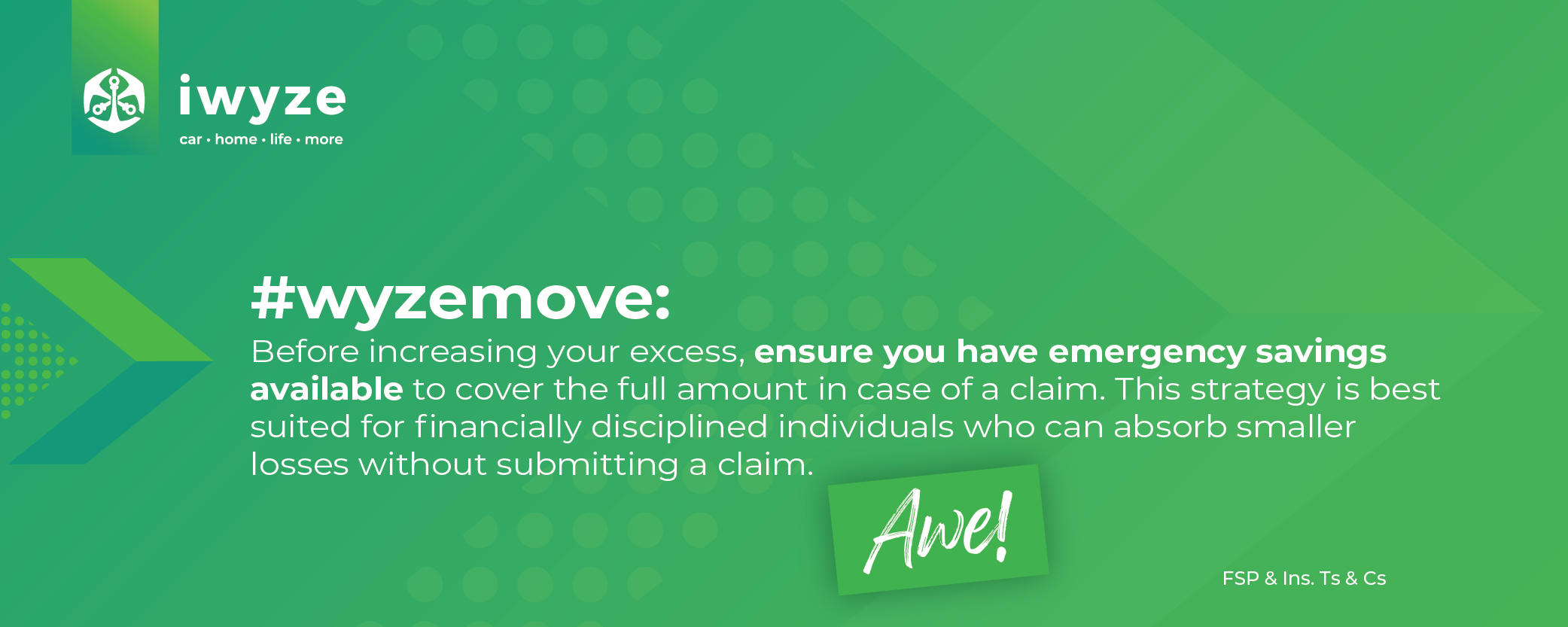This post was published on Jul 9, 2025 | Updated on Sep 10, 2025

Times are tough, and many households are looking for ways to cut costs. It’s no surprise that insurance premiums often come under the microscope when reviewing monthly expenses. While reassessing your policies is a wise move, one area you should never compromise on is your home insurance. Cancelling it altogether can leave you financially vulnerable when you least expect it, because disasters don’t wait for better economic times. Instead of cancelling, here are practical and effective ways to help you save on home insurance while keeping your valuables protection intact.

1. Increase Your Excess
One of the quickest ways to reduce your monthly premium is by increasing your excess: the amount you're responsible for paying when making a claim. The higher the excess, the lower your premium. Below is a table showing the premiums quoted for a 42-year-old married male living in a five-bedroom house located in a residential area, without an alarm system, and insuring the property for R500,000.00. The table outlines the differences in premiums based on various excess options:| Premium: | Excess: |
| R 392.78pm | R 2,350.00 |
| R 350.36pm | R 5,000.00 |
| R 298.99pm | R 10,000.00 |
| R 268.79pm | R 15, 000.00 |
Disclaimer: Please note that all premiums are dependent on the risk profile, and the excesses shown above do not necessarily reflect those available at iWYZE.

2. Boost Your Home Security
Investing in home security not only protects your property and loved ones, but can also lead to significant savings on your insurance premiums.Here are some security upgrades insurers value:
- Burglar bars and security gates
- An alarm system linked to an armed response service
- Deadbolt locks on doors and windows
- Security cameras and motion sensor lighting
Insurers often reward proactive risk reducing individuals, additionally, you’ll gain peace of mind knowing your home is safer from break-ins.
3. Avoid Claims for Minor Incidents
While it’s tempting to claim for every loss, it may cost you more in the long run. Frequent claims normally result in higher premiums and could even lead to policy exclusions when your policy goes for an annual review, which normally happens on the anniversary month of your cover.
Instead, consider handling smaller repairs or losses out-of-pocket. Many insurers reward claim-free years with premium discounts or cashback bonuses. Reserve your claims for significant losses or emergencies.
4. Ask About Available Discounts
Insurers often have discounts available, but you may have to ask for them. For example, at iWYZE we offer discounts when you bundle home and car insurance.
Other possible discounts to inquire about:
- Discounts for retirees or pensioners
Always speak to your insurer to explore your options.
5. Review and Adjust Your Cover
Sometimes, you may be paying for cover you don’t actually need. Reviewing your policy regularly can help you trim unnecessary add-ons while ensuring you’re covered where it matters most.
There are two key parts to home insurance:
- Home contents insurance: Covers the belongings inside your home, such as furniture, appliances, clothing, and personal valuables. There is also coverage for portable possessions, which primarily provides protection for items typically taken outside the home. These include your cellphones, wristwatches, and laptops. These items are specified separately because they are exposed to a much higher risk of theft or loss. When listed on the policy, they are covered worldwide without territorial limits, unlike home contents, which are only covered for theft if taken from the insured address during a break-in.
- Structural (building) insurance: Covers the physical structure of your home, including walls, roofing, plumbing, and electrical systems.
How much structural cover do you need?
Your building insurance should be based on the full replacement cost of your home, not its current market value. Consider inflation, rising building material costs, and labour when estimating what it would cost to rebuild your home completely after a disaster.
6. Include Other Structures on Your Property
Make sure your policy covers all relevant buildings on your property, not just your main house. This includes:
- Detached garages
- Storage sheds
- Wendy houses
- Staff quarters
If these aren’t included in your current policy, you may need to adjust your cover to reflect the full value of your property.


